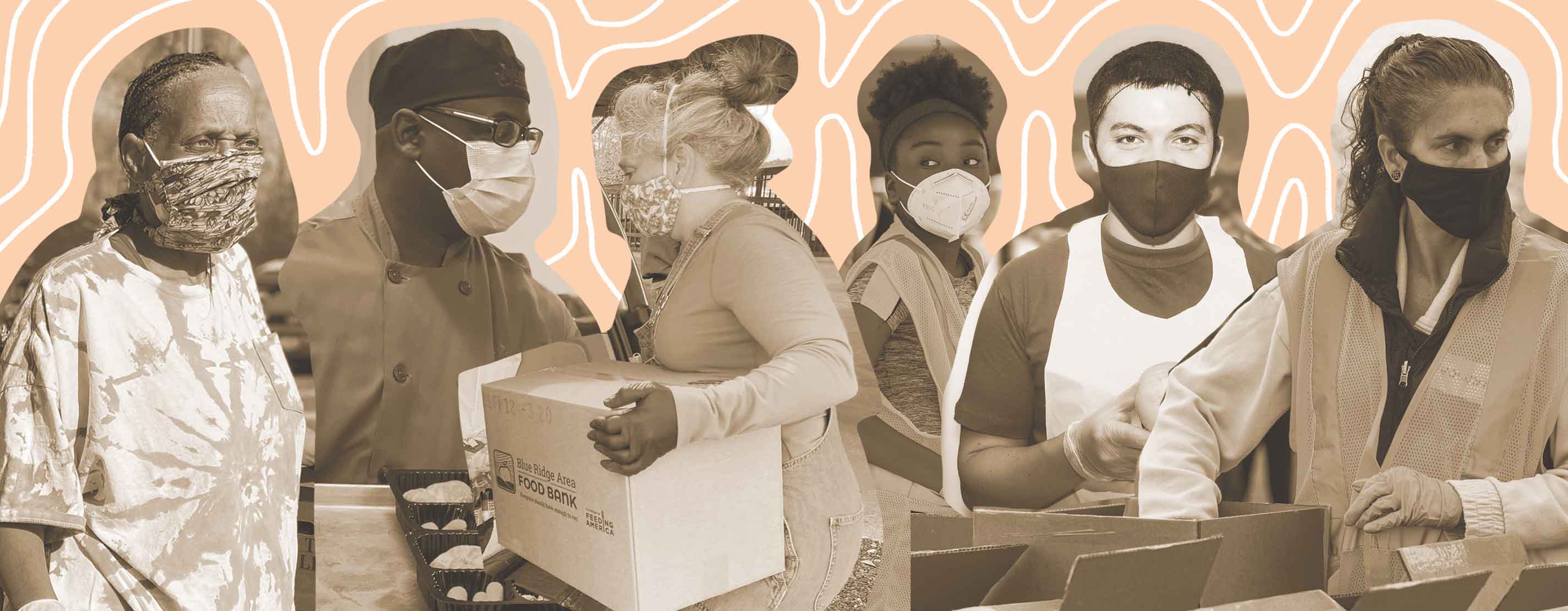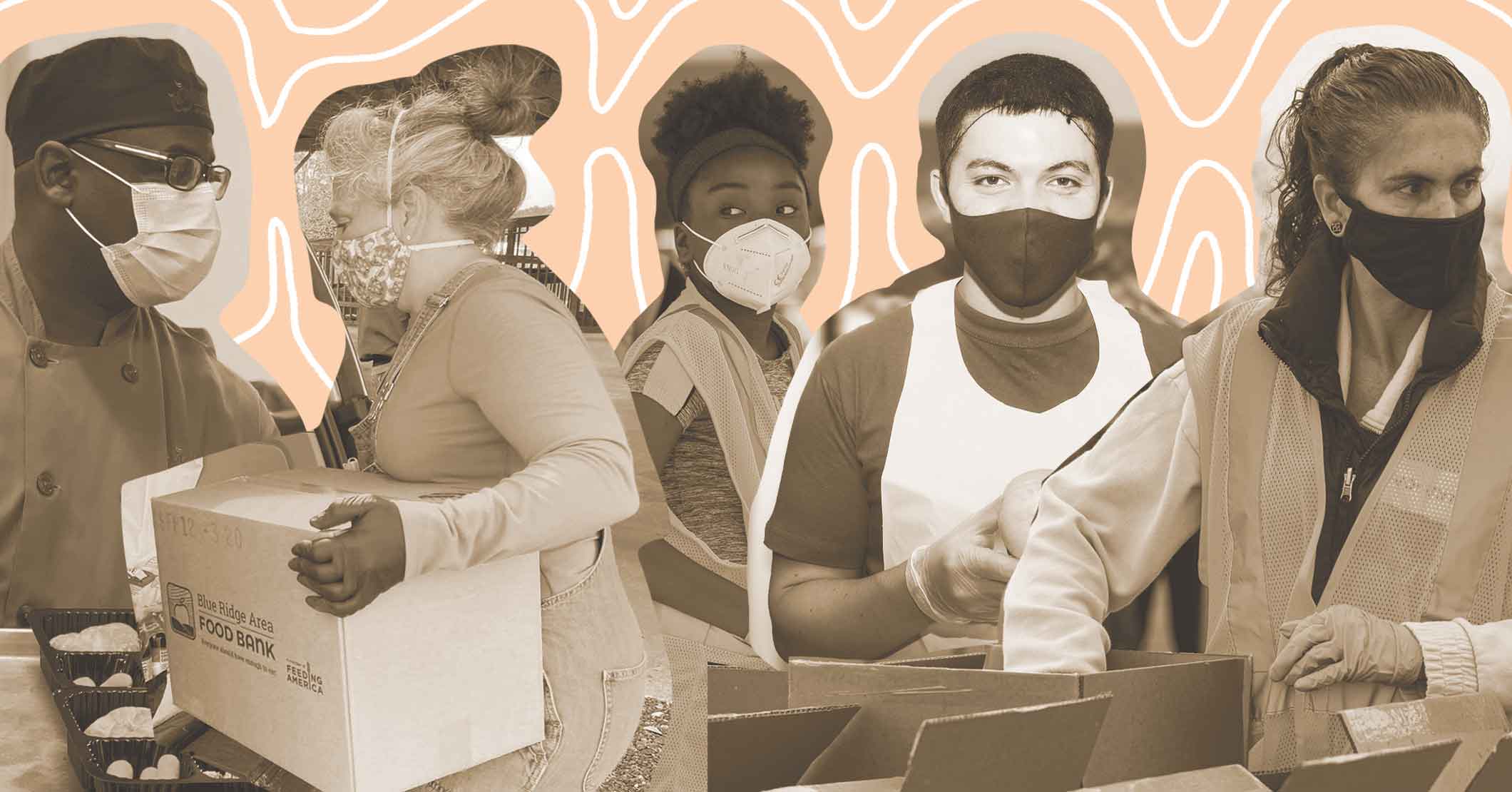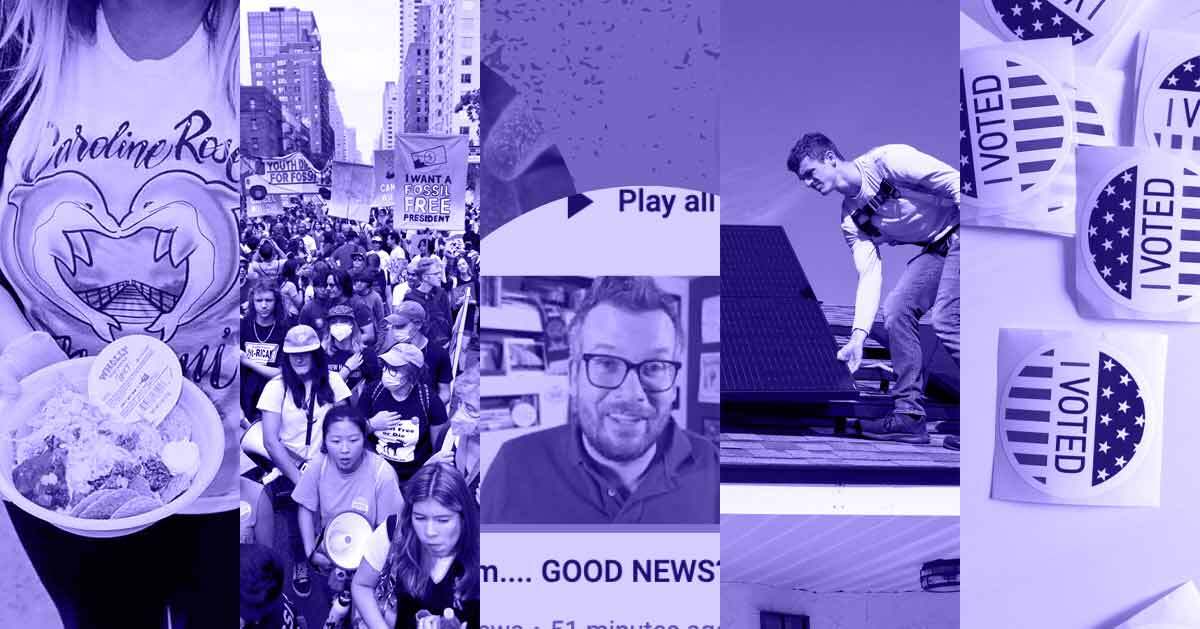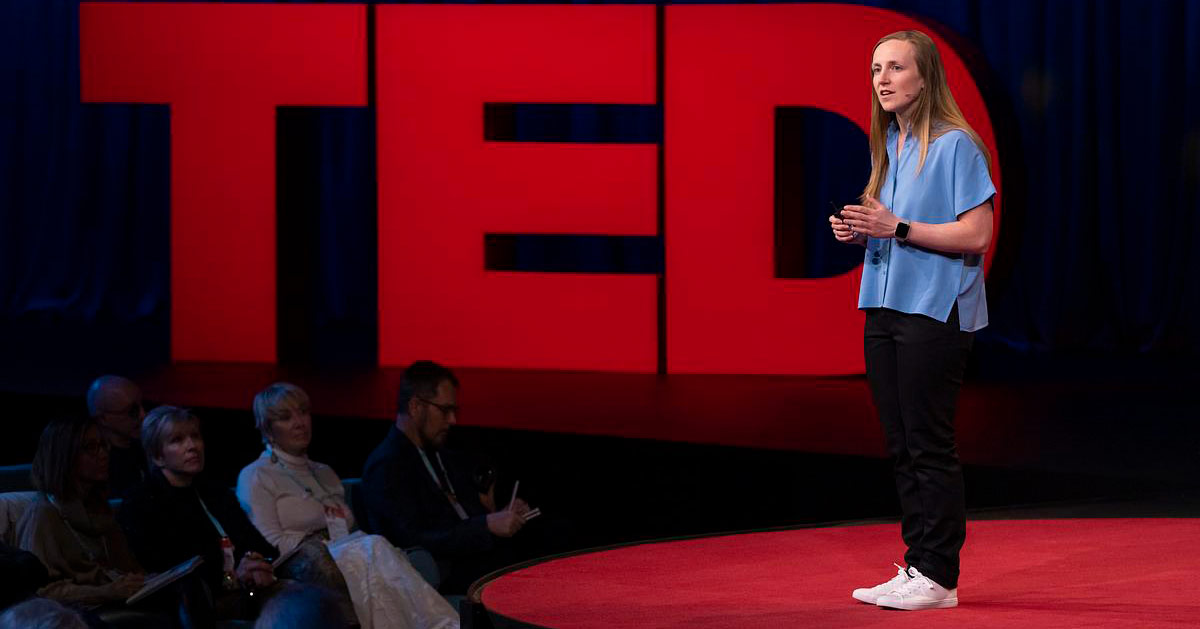In a country that wastes billions of pounds of food each year, it's almost shocking that anyone in America goes hungry. Yet every day, there are millions of children and adults who do not get the meals they need to thrive.
For more than 40 years, Feeding America has responded to the needs of individuals struggling with food insecurity in this country. It’s now the nation’s largest domestic hunger-relief organization, serving one in seven Americans.
When the coronavirus pandemic swept through the United States earlier this year, Feeding America was ready to respond. COVID-19 is in all 50 states, but so are food banks.
The COVID-19 pandemic reminds us that anyone, at any time, in any circumstance, could need a little extra help keeping food on the table.
Feeding America and its network of 200 food banks are responding to the increased need every day. The COVID-19 pandemic reminds us that anyone, at any time, in any circumstance, could need a little extra help keeping food on the table.

Not unlike many Americans, many of the 40 million people who visit a Feeding America food bank live paycheck-to-paycheck and are one bad break away from being in a tough spot.
“In the past, we were the ones donating to the food bank because we had good jobs, a good income,” a food bank beneficiary named Lewis told Feeding America. “We were secure. Within a month, we were needing the food bank. It can happen to anybody.”
Food banks across the country continue to mobilize their response to the pandemic. The Feeding America network is distributing emergency food boxes, and more will continue to reach families and individuals in need in the coming days and weeks.
Other food banks are working with school districts and after-school programs to offer grab-and-go cold meals for children and families to help fill the gap while schools are closed.
Food banks across the network are packing and distributing emergency food boxes as more and more businesses and school districts close.
Many food banks, such as Harvest Hope Food Bank in South Carolina, have also shifted their distribution models and are now offering drive-through options to limit person-to-person contact.
One of the most significant impacts of the pandemic has been school closures. Without access to school meals, children lose a consistent source of healthy food. As such, many food banks are distributing emergency food boxes at children's programs and in partnership with local school districts. Food banks continue to work with school districts to fill the gap as children lose meals they'd normally eat in the classroom.
While these efforts take many different forms, food banks like the Atlanta Community Food Bank are distributing produce to schools on a weekly basis to ensure families have enough to eat at home. Many are also expanding backpack programs, adding mobile pantries at schools, and producing hot meals for children and their families.
The Do’s and Don’ts Of Helping Food Banks During COVID-19
According to Feeding America, demand at food banks is up 60 percent since the start of the COVID-19 pandemic. At the same time, many food banks are seeing decreased donations from the grocery stores and manufacturers that helped them in the past.
Having food on the table means so much more than just a healthy meal — it’s a source of hope.
Below you will find some do’s and don’ts about helping your local food bank to best support our hungry neighbors:
Do: Donate (Money)
A monetary donation or online fundraiser is one of the most efficient and effective ways to support your local food bank in a crisis situation.
These donations give food banks the flexibility and funds to respond wherever the need is highest. Whether that’s purchasing more food to meet the demand, hiring more staff, setting up new meal distributions, or simply putting gas into delivery trucks, cash ensures food banks can meet the demand in their communities.
Do: Host a virtual “food drive” to raise funds.
Consider going virtual! On the next family FaceTime or work Zoom meeting, tell everyone about your fundraiser.
Do: Volunteer.
Some food banks are pausing volunteer opportunities or have new requirements for who can volunteer, but about two-thirds of food banks are accepting new volunteers. The thing your food bank needs most might be you.
Volunteers help pack emergency food boxes, distribute food at drive-through pantries, and much more. Some food banks even have ways to volunteer from your home, like making thank you calls or letters, responding to email inquiries, or performing simple data entry tasks.
Do: Spread the word.
You can help by raising awareness without leaving home. Add the Feeding America profile frame to your Facebook profile picture to not only show your support, but to remind all your friends that food banks are on the front lines of the pandemic. Follow your local food bank on social media, and share their posts to help spread the word.
Don't visit a food bank if you have COVID-19 symptoms.
When in doubt, stay home.
Don’t be afraid to ask what your local food bank needs.
Every food bank is unique, and in this unprecedented situation, what your food bank needs might be different from what other food banks need or what your food bank has needed in the past. Follow your local food bank on social media for the most up-to-date info on what they need.
Don’t start a physical food drive.
In general, donating funds over food is the way to go when supporting a food bank. But that rule of thumb is even more relevant now as sorting and packing food drive donations is incredibly time-intensive for food banks, and this may not be possible with limited staff due to the pandemic. Do keep an eye out for drive-through or curbside food drives led by your local food bank.
Having food on the table means so much more than just a healthy meal — it’s a source of hope.
Food banks are trusted community resources, and during this difficult time, as families and individuals figure out how they can stay safe and healthy, you can help. Find your local food bank, find out what is needed at the local level, and support how you can.
Related: The best motivational quotes about world hunger
Related: How many people die of hunger and how to end world hunger



